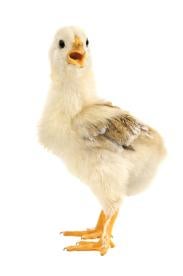Judge Junell of the federal district court of the Western District of Texas issued an order in Permian Basin Petroleum Association v. Department of the Interior that vacates the decision by the U.S. Fish and Wildlife Service (Service) to list the lesser prairie-chicken as threatened under the Endangered Species Act (ESA). The basis for the order was the Service’s improper application of its own Policy for Evaluation of Conservation Efforts When Making Listing Decisions (PECE) to the Lesser Prairie-Chicken Range-wide Conservation Plan (RWP) administered by the Western Association of Fish and Wildlife Agencies. As discussed below, this decision may have significant implications for the Service’s imminent decision whether to list the greater sage-grouse under the ESA.
The Court’s Decision. Issued by the Service in 2003, the PECE allows the agency to consider conservation efforts that have yet to be implemented or shown to be effective, so long as FWS evaluates the certainty that the conservation effort will be implemented and effective.1 PECE sets forth nine criteria for the Service to consider in evaluating whether the conservation effort will be implemented and six criteria to consider in determining whether the conservation effort will be effective.2 While the court acknowledged that the Service considered all 15 criteria when evaluating the RWP, it concluded that the agency “failed to conduct the ‘rigorous’ analysis of the RWP in several key portions that the PECE prescribed and failed to consider important and material information as well as important aspects of the problem, rendering its conclusions therein arbitrary and capricious.”
In particular, the court was critical of (1) the Service’s assumption that a decision not to list the lesser prairie-chicken would remove the incentive for industry to enroll in the RWP, finding such assumption was contrary to statements in the PECE; (2) the Service’s reliance on enrollment in the RWP at the time of the listing, rather than a projection of anticipated future enrollment in the plan, which affected the agency’s evaluation of both who would implement the conservation measures and whether there would be funding for such efforts; (3) the Service’s conclusion that the RWP contains no formal implementation schedule, since it was unclear what the Service expected under this factor; and (4) the Service’s conclusion that the RWP does not address the threats of drought and climate change, because the main function of the RWP was to create additional habitat to ameliorate the effects of drought and habitat fragmentation.
Notably, the court determined that the Service’s interpretation of the PECE was not entitled to any deference, finding that the PECE was unambiguous. The court also held that, while the PECE evaluation of the RWP may entitled to “some deference” to the extent that the Service’s reasoning was persuasive, no deference was warranted because the agency’s analysis was not sufficiently thorough and failed to consider important and material information. The court concluded that the Service’s “errors tainted critical findings and determinations, resulting in an unwarranted final rule listing the LPC as a threatened species” and thus vacated the final rule and listing determination for the lesser prairie-chicken.
Implications. There are four other federal court cases challenging the lesser prairie-chicken listing, two pending in the U.S. District Court for the District of Columbia and two pending in the U.S. District Court for the Northern District of Oklahoma. It is possible that these other courts will reach decisions that are different from, and potentially in conflict with the decision of the District Court for the Western District of Texas. As with the recent set of conflicting federal district court opinions on EPA’s “Waters of the United States” rule, or earlier cases involving contradictory opinions on ESA protections for wolves or limits on snowmobile operations in Yellowstone, we may be entering a period where the ultimate status of the federal agency’s lesser prairie-chicken decision will have to be resolved in the appellate courts or U.S. Supreme Court.
Yesterday’s ruling raises important questions about the upcoming Service decision whether to list the greater sage-grouse under the ESA. The PECE will be at the center of that decision, as the Service makes its judgment whether the conservation actions—and promises of future actions—by the states, industry, conservation bankers, nongovernmental organizations, and others will be adequate, under the PECE, to forestall the need to list the bird. This close to the sage-grouse listing deadline of September 30, it is likely that the Service has largely completed its analysis of the adequacy of the many sage-grouse conservation actions and commitments. Now, however, the Service will need to decide whether its application of the PECE to the much more diverse and complicated circumstances of the sage-grouse requires reconsideration in light of the Texas court’s rejection of the lesser prairie-chicken decision.
In the case of the sage-grouse, the Service will be passing judgment not on a single multi-state plan, but on many different plans generated by eleven states, dozens of federal land management units, and many others. No doubt, the Service’s decision will reflect the complexity and uncertainty involved with such a diverse set of circumstances. The Service may even be considering adoption of an RWP-type arrangement with the states, a move that would seem now to carry additional risk because yesterday’s ruling would appear to open the way for parties from all points on the policy spectrum to bring challenges tailored to capitalize on the Texas court’s willingness to review ESA-related decisions heretofore largely left to agency judgment.
1Policy for Evaluation of Conservation Efforts When Making Listing Decisions, 68 Fed. Reg. 15,100, 15,113 (Mar. 28, 2003).
2Id. at 15,114-15,115.




 i
i


